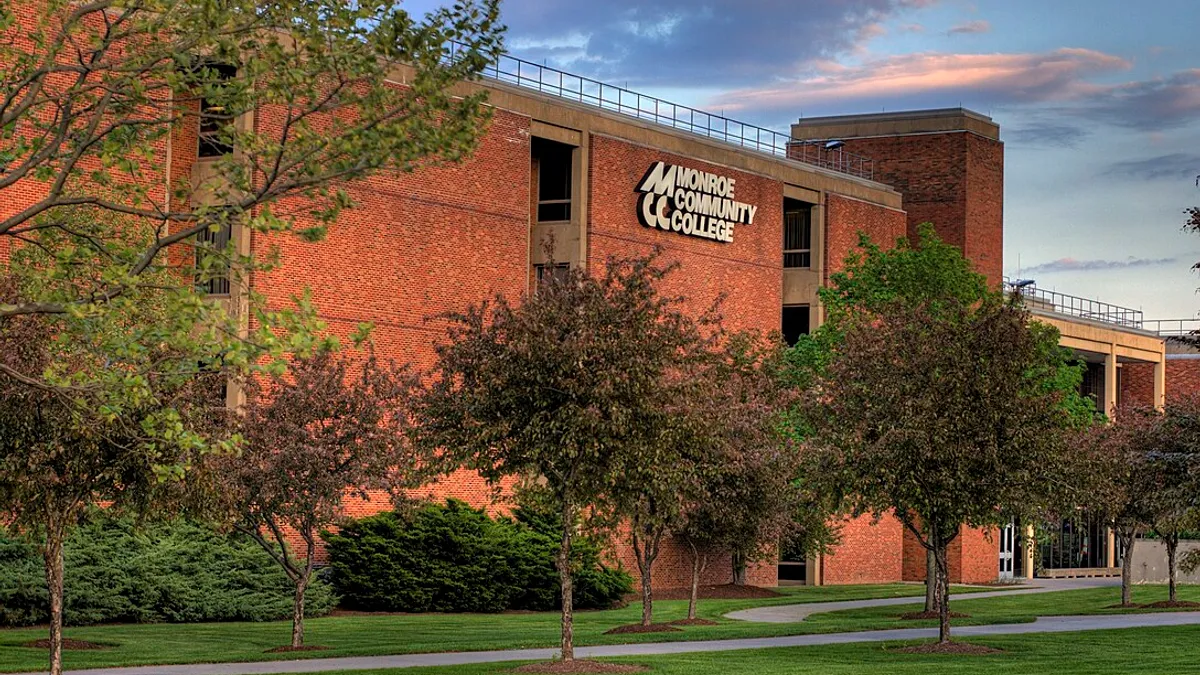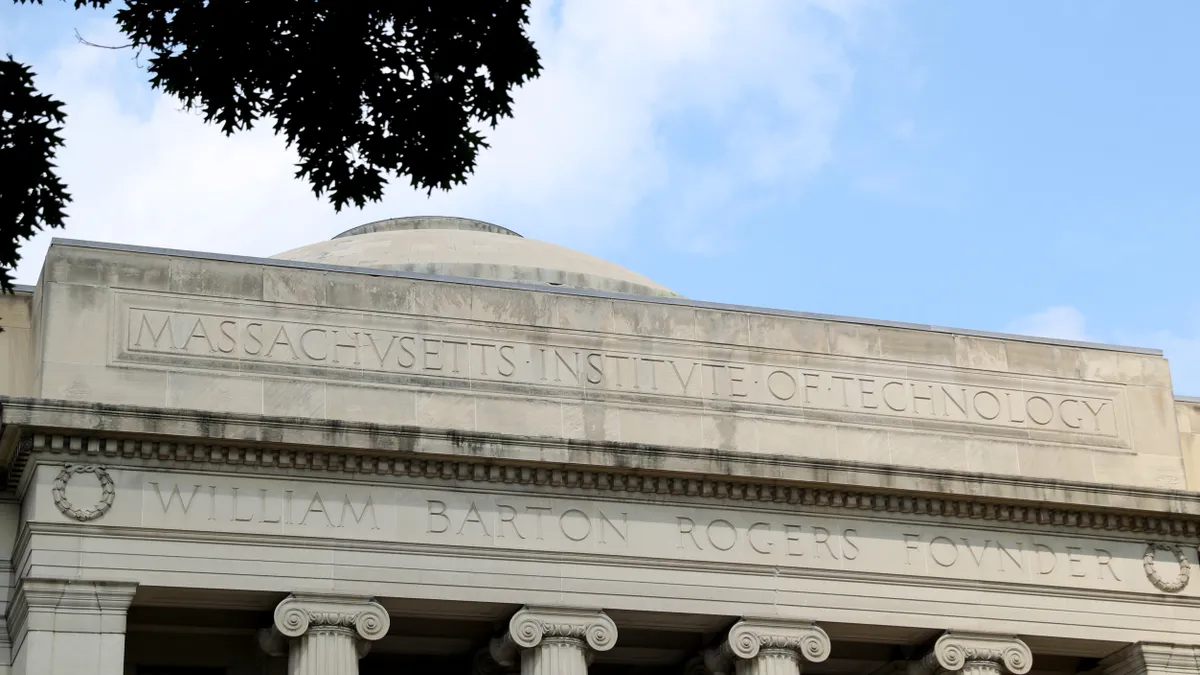West Texas A&M University made headlines in August after announcing its lofty goal of eliminating the majority of textbook-related costs.
A couple months after the university’s initial announcement, West Texas A&M President Walter Wendler conceded his plans were too ambitious and said they would only apply to first- and second-year classes. In an email last month, Wendler said he planned to achieve this goal by finding “whatever means we can to reduce costs to students and assist faculty in finding resources acceptable to them for teaching.”
One of several solutions the university is exploring to eliminate textbook costs is turning to open-access materials.
Open educational resources, or OER, are available in the public domain or under an open license that allows them to be freely used and altered. A growing number of institutions have been exploring using those materials over expensive textbooks.
Because open education resources can reduce the cost of taking classes, they can also help boost the performance of students — especially those who have low income or belong to underrepresented groups, said Jenny Parks, vice president of policy and research at the Midwestern Higher Education Compact, a 12-state coalition that aims to improve student success. That can lead to fewer students dropping out of classes or failing them.
“Anything that interrupts that flow, we know at scale will result in fewer completions and less student success,” Parks said. “Students can take more classes per semester when they are [enrolled in] OER classes, and they are able then to make quicker progress through a program and actually complete programs at a higher rate.”
However, moving to open education resources takes time and work. Without the right staffing, expertise and financial support in place, that could place a higher burden on faculty members.
“Faculty in most places are already overworked,” Parks said. “Asking them to do more without providing release time — and financial support, instructional design support, library support — that’s a lot.”
Momentum grows for open educational resources
While challenging, moving away from textbooks is entirely possible, Wendler contended in an email.
Indeed, millions of open educational resources exist, Parks said, noting that these materials have gained traction in the U.S. over the past five years.
An inflection point for open educational resources, Parks said, followed the publication of a 2016 survey of Florida college students that found expensive textbooks impacted their success. Around two-thirds of students reported not purchasing textbooks required by their classes. Over a quarter dropped a course due to textbook costs.
Meanwhile, evidence shows that open educational resources can reduce costs for students, improve completion rates and increase the number of credits students take each term, Nicole Allen, director of open education at advocacy nonprofit SPARC, said in an email. Using open materials on a bigger scale amplifies those effects, she said.
Today, Parks said open educational resources can be found through institutional repositories and metasearch engines, which combine the results of multiple search engines. The Open Education Network maintains a large library of resources. Rice University nonprofit OpenStax also carries many open textbooks.
And many campuses in recent years — such as Montgomery College, in Maryland, and Tidewater Community College, in Virginia — have focused on offering courses or programs that can be completed without purchasing textbooks, Allen said.
The University System of Georgia’s eCore program offers open education resources in online general education courses that transfer to 21 institutions throughout the state, she added.
Institutions have also been forging collaborations, such as a community portal with open textbooks and course materials shared among more than two dozen historically Black colleges and universities. Moreover, efforts exist to build out open education resources for high-demand fields, such as Chippewa Valley Technical College’s Open RN project, which created an entirely new set of resources for nursing students.
Academic libraries, including ones at Michigan State University and Ohio State University, have also become actively involved in producing open education resources materials, Allen said in an email.
Momentum for open educational resources has been backed by government funding.
In 2018, the U.S. Department of Education began providing federal funding for higher education projects that create or expand the use of open textbooks to achieve savings for students. To date, the Open Textbooks Pilot Program has awarded 16 grants totaling $47 million on projects aimed at developing OER and expanding its use in higher education, according to SPARC.
“There are a lot of good things out there and I think with the right investment, we could create more,” said Parks.
What challenges exist?
Wendler, president of West Texas A&M University, acknowledged that finding alternative solutions to textbooks requires effort and said the institution’s administration is working with the faculty senate to address workload issues.
It is taking steps to determine how many of its classes do not require students to purchase course materials. It’s also exploring what other no-cost or low-cost materials might be available to faculty, Wendler said. And the university is working to identify cost-effective partnerships for purchasing discounted materials for faculty and students.
But student debt, especially when a student leaves the university without a degree, is an “egregious” and primary issue facing public higher education, Wendler said. The hard work is worth it, he argued.
“I am proud to say the majority of WT faculty work hard to fulfill the educational mission,” Wendler said.
The faculty have pushed back against Wendler, citing the textbook-free plan in a no-confidence resolution in April. The resolution also took issue with other actions Wendler has taken, accusing him of making anti-LGBTQ statements, implementing restrictions on free speech and deterring prospective students from attending four-year colleges.
Moreover, it’s relatively difficult for faculty members to find the set of resources they need, Parks said.
For one, work to adapt open materials for college courses usually isn’t funded well, and institutions often lack an employee who is solely dedicated to adoption of open educational resources. The work typically falls under an employee’s other duties and tends to be more of a passion project, Parks said.
But the challenges professors face when switching to open educational resources are not insurmountable, said Parks.
No one expects every faculty member to create their own open educational resources from scratch, said Allen, and assigning a title from Rice’s OpenStax is similar to selecting one from a traditional publisher — it has an ISBN and the bookstore can stock a print copy.
“While there is some effort involved anytime a professor decides to switch from one textbook to another, there is nothing about a textbook being ‘open’ that inherently makes any more work,” said Allen.
And while it takes time for faculty to develop or tailor their own open resources, Allen said SPARC often hears the extra effort pays off with more engaging and accessible experiences for their students.
“It’s important that institutions provide support to faculty for the work it takes,” she added.
Any major change at colleges involves changing policies and procedures, as well as culture, said Allen. College leaders need to approach these types of changes in consultation with stakeholders, especially faculty and students, she said.
“If the goal is to transition the entire institution to open materials, it is important to respect academic freedom and ensure that faculty receive the support they need to choose or develop the materials that best serve their students,” she said.
In the end, it’s unlikely that colleges and universities will replace every single piece of traditionally-licensed, commercial-produced learning material with open educational materials, said Parks. There will always be very niche markets, or some topics where openly-licensed material that is less expensive or free to students hasn’t been created.
“I don’t think we’ll ever see 100%,” said Parks. But, “there are some schools that come pretty close, and that is what they aspire to.”






















